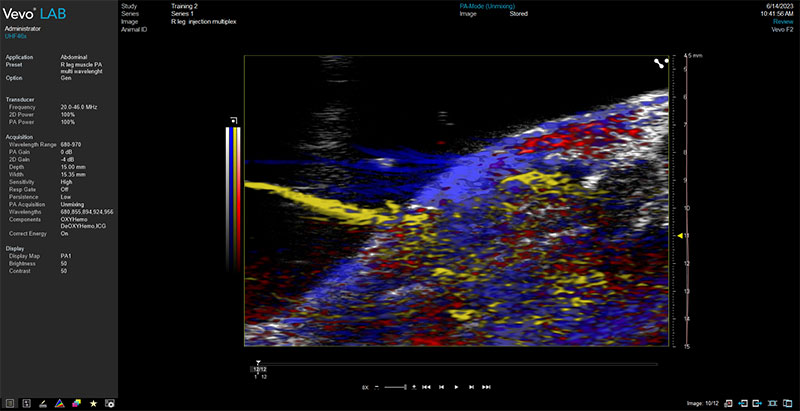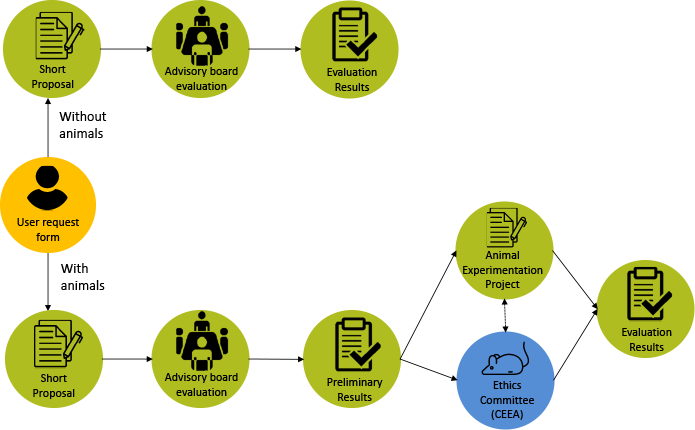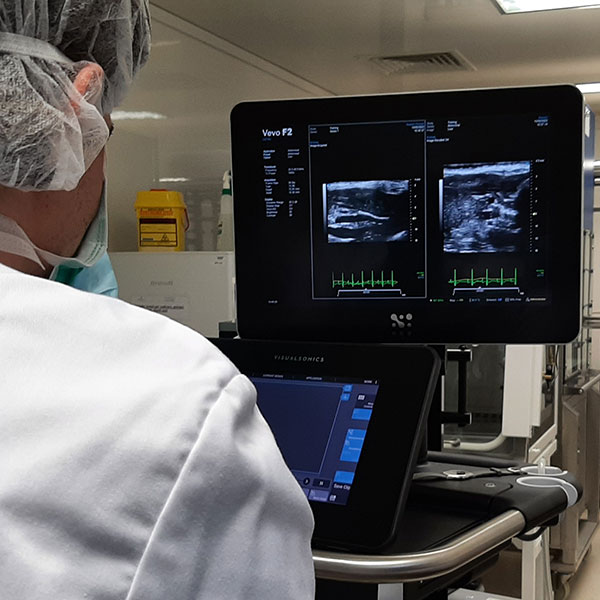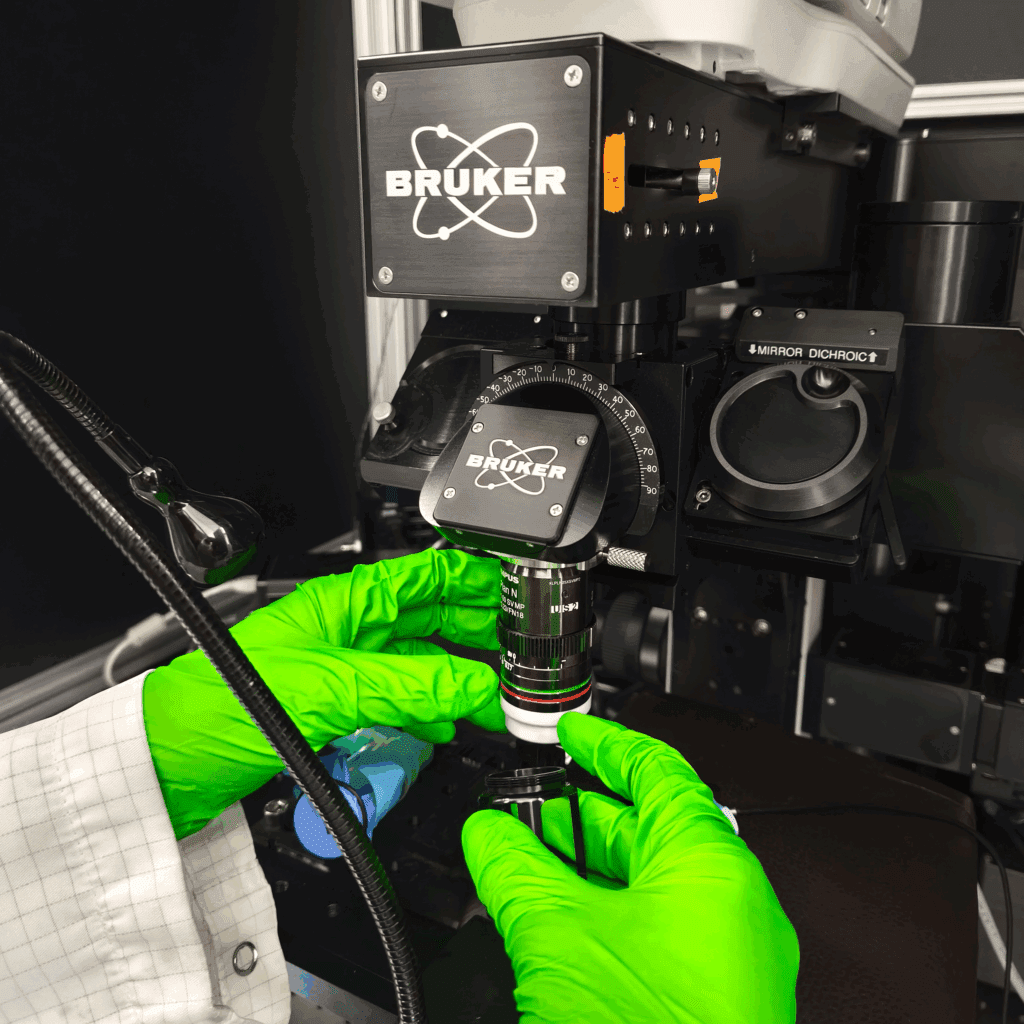The IBEC BioImaging Facility is a singular technological scientific infrastructure that provides imaging tools for in-vivo, ex-vivo and in-vitro study of different experimental models, obtaining information at the molecular, cellular or tissue level, of a physiological, anatomical or combined nature.
The Facility is open to the entire scientific community, with the aim of serving projects in fields of chemistry, pharmacology, cell biology, neuroscience, microbiology, virology, and phototherapies, in addition to supporting R&D for in-vivo experimentation for biomodels and animal models, for the study of new drugs and nanodrugs.
Our Facility provides researchers with unique scientific-technical equipment, as well as unique techniques:
- Multi-mode in vivo imaging system with ultra-high frequency and photoacoustic capabilities to obtain images combining ultrasound with photoacoustics (cofunded by the Ministerio de Ciencia, Innovación y Universidades with funds from the European Union NextGenerationEU, Plan de Recuperación, Transformación y Resiliencia (PRTR-C17.I1) and the Generalitat de Catalunya).

- Preclinical 3T Magnetic Resonance Imaging (MRI) enhanced by hyperpolarization, which provides a sensitivity of the technique more than 10,000 times higher than conventional magnetic resonance. The system is operational, and the group led by Dr. Irene Marco, in collaboration with the BioImaging staff, is responsible for its management (cofunded by the Ministerio de Ciencia, Innovación y Universidades with funds from the European Union NextGenerationEU, Plan de Recuperación, Transformación y Resiliencia (PRTR-C17.I1) and the Generalitat de Catalunya).

- Vertical multiphoton microscope for the stimulation and obtaining of intravital fluorescence. Grant EQC2021-007313-P funded by MICIU/AEI /10.13039/501100011033 and by the European Union NextGenerationEU/PRTR

The BioImaging Facility is located a few meters away from the 2,600 m2 of PCB specific pathogen free (SPF) animal facility. This proximity is of significant scientific and operational importance, as it enables the use of techniques that support longitudinal animal studies.
For more information, please contact bioimaging@ibecbarcelona.eu
SERVICES

•Acquisition of live 3D images.
•Determination of the distribution of oxygenated and deoxygenated blood.
•Tracking of injected contrasts or nanoparticles in real time.
EQUIPMENT
BECOME USER
To become request a service from the BioImaging Facility, please follow the steps below:
•1. Read the ‘information and regulations for users’ document:
Terms and conditions of use
•2. Fill in the new user application forms:
a. Customer registration form: to be completed by the person who assumes the costs resulting from the provision of services carried out at BioSpace.
Customer Registration Request
b. User linked to a customer registration form: to be completed by the person that will directly use BioSpace services. This person must be linked to a customer that will assume the costs resulting from the services provided.
User linked to customer registration form
c. User On Boarding Request: with information on the biological agents that are intended to be used.
User On Boarding Request.
•3. Send the completed application forms to bioimaging@ibecbarcelona.eu. The service request will be evaluated and prioritized by the BioImaging Advisory Board

ADVISORY BOARD
Composed by 4 group leaders and one Ramón y Cajal researcher with a broad view of the work with experimental animals and the regulatory matters that is related. They have the expert knowledge of the new cutting-edge imaging techniques included in the BioImaging Facility.
- Prof. José Antonio del Río, Molecular and Cellular Neurobiotechnology Group Leader
- Prof. Pau Gorostiza, Nanoprobes and Nanoswitches Group Leader
- Prof. Giuseppe Battaglia, Molecular Bionics Group Leader
- Dr. Irene Marco-Rius, Molecular Imaging for Precision Medicine Group Leader
- Dr. Zaida Álvarez, Biomaterials for Neural Regeneration Group Leader
The BioImaging Advisory Board (BAB) was been constituted to assist and advise the BioImaging Facility in:
- the development of the policies and set up of the service.
- reviewing and prioritize all requests for new scientific equipment for the BioImaging Facility to be presented to IBEC’s Director.
- the evaluation and prioritization of the services requests considering:
- total time and frequency of the requested studies;
- technical feasibility (existence of animal experimentation procedures and preliminary results);
- potential academic and training impact.
- establishment of a balance between projects in production and new projects to avoid saturation of the service.
- ensure the access to the service for internal and external researchers.




